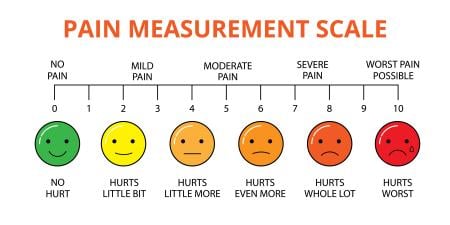Case
Brad was a 53-year-old postal worker who moved from Lansing, Michigan, to Tucson, Arizona. He had been relatively healthy since quitting drinking at 48. Due to his prior alcohol abuse, however, he had developed chronic pancreatitis, which caused him debilitating abdominal pain. He had modified his diet and had been taking pancreatic enzyme supplements faithfully for some time but needed long-acting daily morphine to carry on his normal work activities at the post office.
To continue his care in Tucson, Brad went to a primary care clinic, where he was seen by Dr. Lee. Dr. Lee had long experience in prescribing opioid medications and required all his patients to sign opioid treatment contracts, which explicitly state the risks and benefits of treatment, prohibited behaviors, and criteria for termination of treatment.
A resident physician in Dr. Lee’s clinic approached Brad to discuss the terms by which he could continue to receive his prescriptions for long-acting morphine from Dr. Lee. As the resident explained the contract, Brad got increasingly upset. Finally he said, “Stop. Why are you treating me like a criminal when I have a legitimate medical condition?”
The resident physician saw his point. She wondered whether this contract had been offered in good faith and whether it was Dr. Lee’s way of managing legal risks or discouraging patients he didn’t want to treat. If the latter, it seemed to manage risk at the expense of the patient-physician relationship. The resident didn’t know what to say to Brad.
Commentary
Managing chronic nonmalignant pain is an important aspect of primary care. Approximately 75 million Americans experience chronic or recurrent pain. The pharmacologic treatment options, and the evidence to support their use, vary with the underlying condition; a large number of patients receive opioids to treat their chronic nonmalignant pain. As with all therapies there are risks and benefits—and the risks of prescription opiates have received a considerable amount of attention in the medical profession, lay press, and from regulatory agencies. These include abuse, diversion (selling to others), addiction, and lethal overdose.
Alarmingly, the majority of nonmedical users of prescription drugs report that they get the medication from a friend or relative, and the majority of time that person is being prescribed the medication by one doctor [1]. Seeing the consequences of such prescription drug abuse exacts a toll on well-meaning clinicians who prescribe pain medications with the goal of relieving suffering and improving a patient’s quality of life. We now find ourselves in a world in which a patient’s complaint of uncontrolled pain cannot always be taken at face value. The threat of a patient’s misrepresenting his or her symptoms to obtain a drug of abuse is real.
Enter the narcotics contract. A narcotics contract is a treatment agreement signed by the patient and clinician that sets out the expectations for a patient using these high-risk medications. Common contract elements include:
- informing the patient of the risk of opioid tolerance and physiologic dependence,
- requiring that only one doctor prescribe and one pharmacy dispense the drug,
- stating that lost or stolen prescriptions will not be replaced,
- prohibiting dose or frequency increases by the patient,
- use of prescription drug monitoring programs (databases that report all controlled substance prescriptions filled by that patient), and
- assessments of compliance—e.g., random pill counts and urine drug screens in the prescriber’s office
One could certainly agree with Brad—these contracts may seem to presume guilt and potentially threaten the nature of the patient-doctor relationship. So do the benefits of such arrangements outweigh the possible costs?
Do Narcotics Contracts Make Opiate Prescribing Safer?
Unfortunately, there is little data to answer this question. A systematic review of 11 studies of opiate treatment agreements found only weak evidence of a reduction in opiate misuse [2]. It should be noted that these studies were methodologically poor. Routine use of prescription drug monitoring programs, only one element of narcotics contracts, has been correlated with reduced opiate sales but not a reduction in abuse [3, 4].
For the sake of argument, let’s assume that narcotics contracts and the processes they entail (identifying aberrant behavior, random urine drug tests, and pill counts) are effective in identifying abusers and diverters and will reduce inappropriate prescription drug use. This potentially benefits the patient and society. If the patient is abusing, the source of harmful drugs will be curtailed, perhaps lowering the risk for unintentional overdose. At the community level, disrupting the pipeline of prescription drugs to nonmedical users may also be of benefit. These assumptions of benefit will allow us to examine the ethical questions raised by these contracts.
Do the Potential Benefits of Safer Prescribing Outweigh the Potential Burdens to the Patient or the Patient-Doctor Relationship?
The impact of narcotics contracts on the patient-doctor relationship has not been extensively studied. Many patients are aware of the recent increases in prescription drug abuse and recognize the importance of preventing abuse and diversion. If framed as a tool to ensure safety for both the individual patient and society, contracts may be viewed as acceptable even by patients who are at very low risk for abuse.
While these contracts are often formatted like informed consent documents, one must wonder whether a patient’s need for effective analgesia introduces an element of coercion. Perhaps a patient would agree to any requirements, no matter how burdensome, to obtain needed medication. The resident in this case scenario wonders whether the contract arises from a need to manage legal risks. While there is a possibility of physician liability in cases of prescription drug overdose, the ability of narcotics contracts to mitigate those risks has not been evaluated.
Perhaps the greatest potential harm in the use of narcotics contracts is the inherent message to the patient that he or she can’t be trusted. Does a contract then fundamentally alter the fiduciary nature of the relationship between the doctor and patient? While the documents may contain language about shared goals, the bottom line is that the patient wants a medication that is perceived to be of benefit. The physician has the power to provide it but also may dictate the terms of provision. Physicians may frame the use of these contracts as tools to ensure patients’ safety when taking a high-risk medication, but we do not use similar contracts for other medications that pose substantive risks to patients. Consider warfarin, for example. If the patient fails to undergo routine lab checks or takes too much, he or she could experience life-threatening bleeding. However, we do not terminate treatment for patients who have difficulty maintaining adherence. Clearly the nature of the medication involved—specifically the potential for abuse by the patient—is a key factor in deciding to utilize treatment contracts.
But should the “nature” of the patient be a key factor as well? Judging a patient’s risk for drug abuse based on age, ethnicity, socioeconomic status, or appearance would be inaccurate and unjust. There are a number of short questionnaires and risk assessment models that can be used to estimate a patient’s risk for prescription drug abuse [5]. Alternatively, a physician may decide to simply employ such contracts with all patients to avoid any sort of “judgment” about an individual. This approach could alleviate an individual patient’s concern about being singled out as a potential drug abuser, but some patients may still have a response similar to Brad’s.
Do Narcotics Contracts Place Patients at Risk for Unjustified Termination of Opiate Analgesia?
The apparent violation of opiate contracts may occur for reasons other than abuse or diversion. A patient who has real pain may be denied effective analgesia if the terms of the contract are violated for other reasons. One’s pain medication could inadvertently fall into the toilet. A patient could experience a severe pain crisis on a weekend and need to take extra doses of pain medication to avoid a trip to an emergency room—and as a result have an inaccurate pill count. As a result, the widespread use and enforcement of narcotics contracts may place some patients with low risk of abuse at elevated risk for undertreated pain. Physicians ought to exercise some degree of flexibility in addressing “violations” of such contracts.
Conclusions
When considering both the potential benefits and burdens of narcotics contracts, one can conclude that using them for patients at high risk for abuse or diversion is justified. The alternatives to narcotics contract use could be either physicians continuing to prescribe with no procedural safeguards to reduce abuse or refusing to prescribe opiates at all. The consequences of both are worse than those of using contracts. As with many clinical decisions, physicians ought to consider the individual risks and benefits rather than automate an intervention that could lead to patient harm. Screening all patients using evidence-based tools to estimate risk, then requiring contracts for high-risk patients, seems a reasonable approach that is justified by the current state of the science.
In the case of our patient Brad, assessing his risk of abuse and, if it is high, communicating that this contract-based approach is designed to ensure his safety may help ameliorate the concerns he expresses in the visit.
References
-
Substance Abuse and Mental Health Services Administration. Results from the 2008 National Survey on Drug Use and Health: national findings. Accessed April 15, 2013.
- Starrels JL, Becker WC, Alford DP, Kapoor A, Williams AR, Turner BJ. Systematic review: treatment agreements and urine drug testing to reduce opioid misuse in patients with chronic pain. Ann Intern Med. 2010;152(11):712-720.
- Wang J, Christo PJ. The influence of prescription monitoring programs on chronic pain management. J Pain Physician. 2009;12(3):507-515.
-
Twillman R. Impact of prescription monitoring programs on prescription patterns and indicators of opioid abuse. J Pain. 2006;7 (4 Suppl):S6.
- Jones T, Moore T, Levy JL, Daffron S, Browder JH, Allen L, Passik SD. A comparison of various risk screening methods in predicting discharge from opioid treatment. Clin J Pain. 2012;28(2):93-100.



